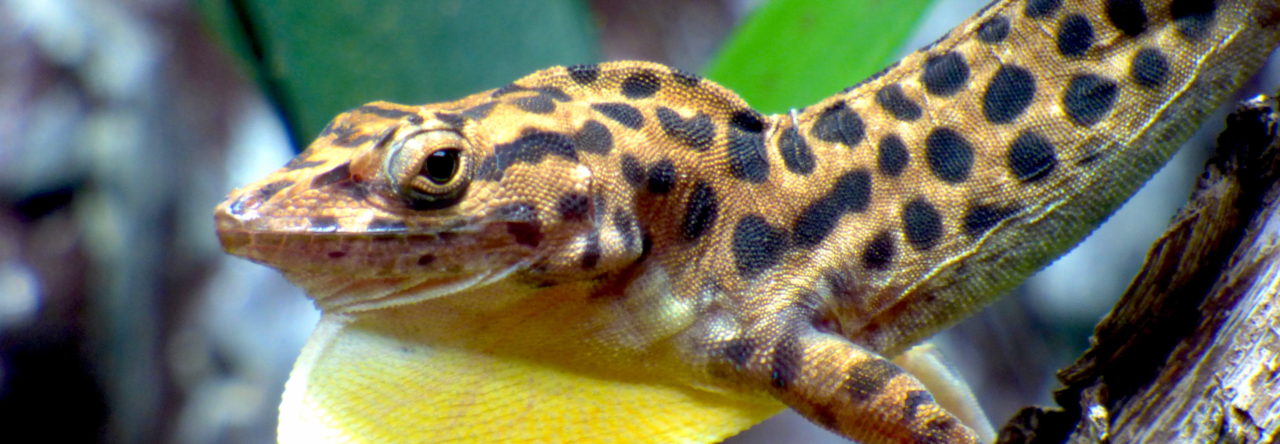 In a fascinating talk, Chad Watkins reported the discovery of a surprising frequency of homeotic mutations along the anterior-posterior axis and implicated the high rate of transposons in the Hox D cluster as a possible cause. Watkins reported that 27% of DNA in the HoxD cluster is comprised of transposons, much higher than in other vertebrates. Moreover, Hox D gene expression is shifted posteriorly. For example, Hox D10 normally should express at anterior boundary of hip, but in A. carolinensis it is all the way down at the tip of the tail. Further, in later stage embryo, ectopic expression of D13 occurs in the hand and feet, which is novel in vertebrates. Could this be related to ecomorph differentiation in limb elements?
In a fascinating talk, Chad Watkins reported the discovery of a surprising frequency of homeotic mutations along the anterior-posterior axis and implicated the high rate of transposons in the Hox D cluster as a possible cause. Watkins reported that 27% of DNA in the HoxD cluster is comprised of transposons, much higher than in other vertebrates. Moreover, Hox D gene expression is shifted posteriorly. For example, Hox D10 normally should express at anterior boundary of hip, but in A. carolinensis it is all the way down at the tip of the tail. Further, in later stage embryo, ectopic expression of D13 occurs in the hand and feet, which is novel in vertebrates. Could this be related to ecomorph differentiation in limb elements?
Watkins examined adult A. carolinensis to look for possibly related homeotic mutations and found ample evidence. Normally, green anoles have processes on 8 or 9 caudal vertebrate, but occasionally some have 7 or 10. Similarly, an extra lumbar vertebra occurs 10% of the time, and an addition vertebra fused in the sacrum also was seen.
Most skeletons are prepped by dermestid beetles, but the little buggers are too voracious and eat up the small and slender elements. Clearing-and-staining reveals additional aberrant forms, including floating interstertial ribs and vestigial xiphisternal ribs.
- Evolution in Real Time on Lizard Island - March 23, 2025
- Spider Snags Adult Anolis osa - March 22, 2025
- An Homage to the Green Anoles of New Orleans - March 21, 2025


2 Pingbacks